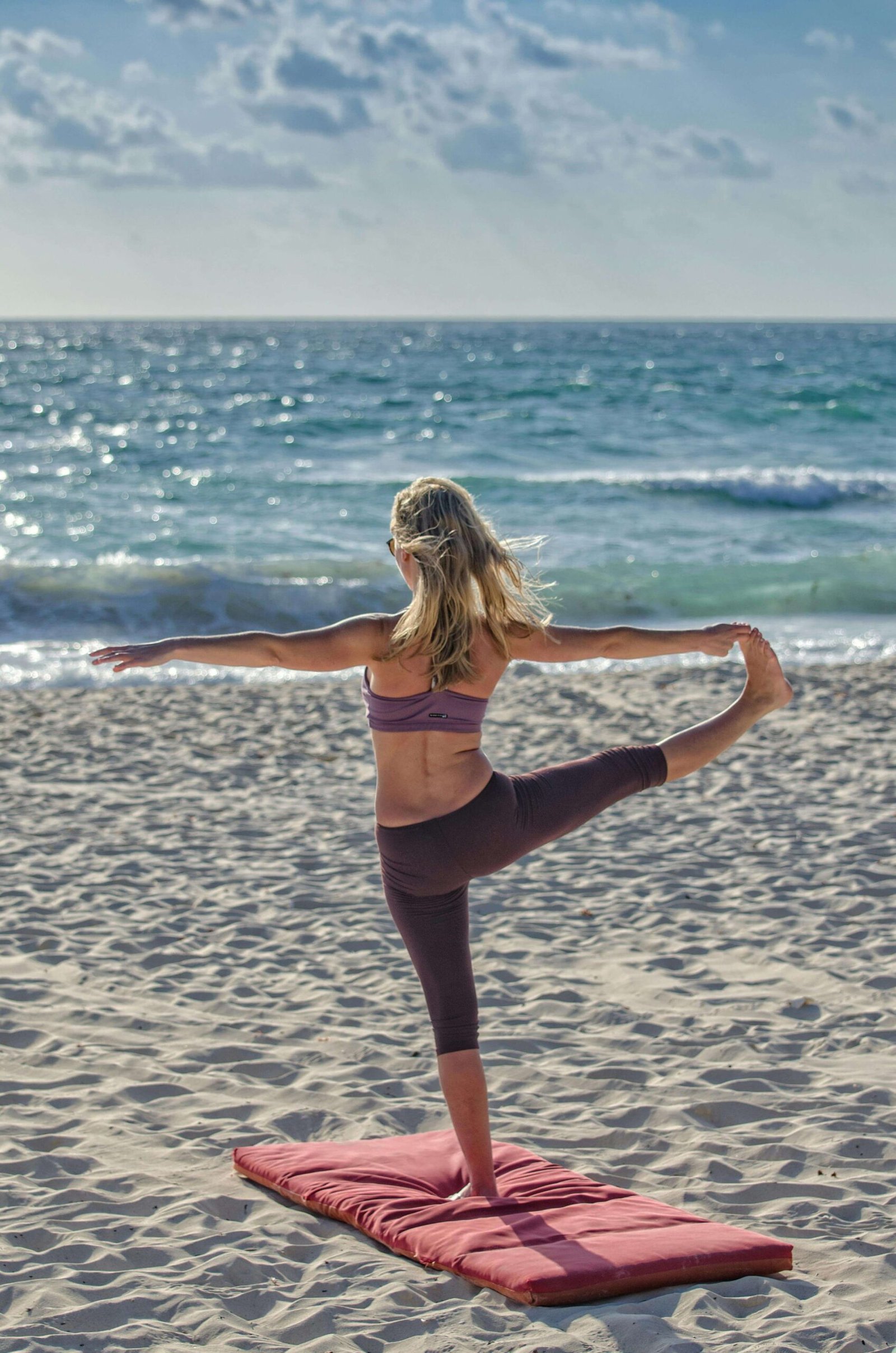Regular physical activity works wonders for our bodies, both physically and mentally.
We will explore the importance of movement and the numerous benefits it brings, discussing cardiovascular movement to strength training and how they impact our bodies.
Discover tips on how to incorporate more movement into your daily life and address common barriers that may be holding you back.
So, lace up your shoes and join us on this journey to a healthier, more active lifestyle!
Key Takeaways on Why Movement Works:
- Movement is important for overall health and well-being.
- There are various types of movement, such as cardiovascular, strength training, flexibility, balance, and mindful movement.
- Incorporating movement into daily life can be simple, such as taking the stairs, walking or biking to work, and finding enjoyable activities.
Why is Movement Important?
Physical activity plays a crucial role in the development of children, as it is closely linked to their educational progress, physical growth, and overall learning experiences. This connection is especially significant within the Early Years Foundation Stage, where organized movement-based activities can greatly improve cognitive abilities and motor skills.
What are the Benefits of Movement?
The advantages of physical movement extend beyond mere physical well-being, contributing to the development of improved communication abilities, a sense of community, and essential support structures for children.
Regular physical exercise not only fortifies the body but also boosts emotional welfare by prompting the release of endorphins, commonly referred to as the ‘feel-good’ hormones. Engaging in activities such as sports or group fitness sessions enables individuals to cultivate skills in teamwork and leadership, thereby fostering a spirit of camaraderie.
The feeling of inclusion within a movement-oriented community nurtures empathy and comprehension, establishing a supportive atmosphere where individuals encourage and inspire one another towards shared objectives. Consequently, movement serves as a catalyst for nurturing connections and fostering deeper relationships among peers across all age groups.
How does Movement Impact the Body?
The act of movement has a significant influence on the human body, playing a key role in physical development, muscle strength, and overall health.
Engagement in consistent physical activity, which involves various forms of movement, initiates a series of physiological responses within the body. Participation in exercises such as weight lifting or resistance training facilitates the growth of muscles and the enhancement of strength. Similarly, engaging in cardiovascular exercises like running, swimming, or cycling can contribute to the improvement of heart and lung health. As one increases their level of physical activity, the body becomes more adept at delivering oxygen and nutrients to the tissues, resulting in an overall enhancement of physical fitness and well-being.
What are the Different Types of Movement?
Movement can be classified into various categories, each serving a distinct purpose in physical development. These categories can be efficiently taught through specialized classes provided by MovementWorks, which are inclusive and led by experienced specialists.
1. Cardiovascular Movement
Regular cardiovascular exercise is vital for preserving physical health as it enhances heart function and increases overall stamina.
Participating in consistent cardiovascular activities can diminish the likelihood of heart disease by fortifying the heart muscle and enhancing blood circulation. Common cardiovascular exercises encompass running, cycling, swimming, and dancing. These activities not only improve cardiovascular health but also augment lung capacity and oxygen distribution across the body, resulting in heightened endurance levels and overall physical wellness.
2. Strength Training Movement
The focus of strength training lies in the enhancement of muscle strength, a crucial component of overall physical fitness and bodily stability. By integrating strength exercises into one’s workout regimen, individuals can augment their muscle mass, enhance bone density, and boost metabolism.
Various forms of strength training exercises exist, encompassing bodyweight exercises, weightlifting, resistance band workouts, and plyometrics. Each exercise type targets distinct muscle groups, contributing to the development of overall strength and endurance.
Engaging in regular strength training not only aids in attaining a sculpted physique but also serves a pivotal role in averting injuries and elevating athletic performance. Striking a harmonious balance between strength training and other exercise modalities is critical for the cultivation of a comprehensive and well-rounded fitness routine.
3. Flexibility Movement
The movement of flexibility enhances the range of motion of the body, reducing the risk of injuries and improving overall physical performance.
Incorporating regular flexibility exercises into one’s workout routine can increase muscle flexibility, joint mobility, and posture alignment. Such exercises help to lengthen and stretch muscles, ultimately leading to reduced muscle tension and improved circulation.
Beneficial examples of flexibility exercises include yoga poses like downward dog, cobra stretch, and seated forward fold. Pilates also offers an effective method for enhancing flexibility through exercises that emphasize core strength and full-body movement.
Furthermore, the addition of dynamic stretches such as leg swings and arm circles before a workout can effectively prepare the body for physical activity and enhance performance.
4. Balance and Coordination Movement
Balance and coordination of movement are essential for maintaining physical stability and executing complex motor tasks proficiently.
When engaging in physical activities, possessing adequate balance and coordination can have a substantial impact on an individual’s performance and overall health. These abilities not only contribute to the prevention of injuries by enhancing stability but also improve agility and precision in various movements.
By integrating exercises that target balance and coordination into their routine, individuals can strengthen their core muscles, enhance posture, and refine proprioception. Activities like yoga, Pilates, tai chi, and specific balance drills can be advantageous in refining these abilities.
Consistent engagement in these exercises can result in enhanced athletic performance and a decreased susceptibility to falls, particularly among older adults.
5. Mindful Movement
Conscious movement involves the integration of physical exercises with mental concentration, fostering both physical health and mental acuity.
Engaging in pursuits like yoga and tai chi exemplifies forms of conscious movement, as they merge specific movements with controlled breathing techniques and heightened attentiveness to the present moment. These disciplines not only enhance flexibility, strength, and equilibrium but also promote stress reduction and emotional regulation. By uniting the mind and body through deliberate movement and breath control, individuals can develop a heightened sense of self-awareness and enhance their overall wellness.
Infusing mindfulness into routine activities such as walking or stretching can further advance a state of mental serenity and physical rootedness.
How Much Movement Do You Need?
The determination of the appropriate level of physical activity required for optimal health is contingent upon various factors, such as age, physical fitness, and individual objectives, all of which can be addressed through customized movement regimens.
In the case of children and adolescents, a minimum of 60 minutes of physical activity daily is recommended to promote healthy growth and development. Conversely, older individuals should prioritize the integration of a diverse range of exercises encompassing aerobic, strength, flexibility, and balance components into their routine to preserve mobility and mitigate the risk of falls.
Individuals grappling with chronic ailments or disabilities can experience considerable benefits from personalized movement programs tailored to accommodate their specific requirements and capabilities. Through consultations with fitness professionals or healthcare providers, individuals can devise a bespoke strategy that ensures they engage in the appropriate amount and form of physical activity tailored to their unique circumstances.
What are Some Tips for Incorporating More Movement into Your Daily Life?
Increasing physical activity in daily routines can be accomplished through straightforward approaches and engagement in organized classes led by movement experts.
1. Take the Stairs Instead of the Elevator
One effective method to integrate additional physical activity into daily routines is by opting to use the stairs rather than the elevator. This simple choice not only enhances cardiovascular health but also contributes to the strengthening of leg muscles.
Along with the health benefits, selecting the stairs provides a brief but impactful burst of physical activity that can elevate metabolism and facilitate the burning of excess calories throughout the day. To further augment daily movement, individuals may contemplate parking further from their ultimate destination to incorporate extra steps, or engaging in a brief walk during designated break periods at the workplace. Furthermore, minor decisions such as standing while conversing on the phone or engaging in stretches during television commercial breaks can cumulatively lead to substantial enhancements in overall health and fitness levels.
2. Walk or Bike to Work
Commute via walking or biking presents an effective means of integrating physical activity into one’s daily schedule, thereby fostering cardiovascular wellness and diminishing one’s carbon footprint. Additionally, this mode of transportation can serve to alleviate stress levels and enhance mental well-being. Embracing this uncomplicated adjustment not only yields personal health benefits but also contributes to environmental preservation by curbing air pollution and road congestion.
To successfully incorporate walking or biking into one’s daily travel routine, it is recommended to meticulously plan the chosen route in advance, don suitable safety equipment like helmets and reflective attire, and adhere to traffic regulations. It is prudent to have contingency strategies in place to address inclement weather conditions or unforeseen emergencies.
3. Schedule Regular Exercise Time
Incorporating regular exercise into one’s daily schedule is essential for promoting continuous movement and preserving physical well-being. By allocating designated time periods for physical activities, individuals prioritize their overall health and establish a structured routine.
Establishing attainable objectives for each workout session aids in maintaining motivation and monitoring progress effectively. Diversifying the types of exercises undertaken is advantageous as it keeps the routine engaging and targets various muscle groups.
It is advisable to include a combination of cardiovascular exercises and strength training to ensure a comprehensive fitness regimen. Consistent engagement in physical activities not only enhances mood and vitality but also improves overall physical fitness and mitigates the risk of chronic illnesses.
4. Find Activities You Enjoy
It is essential to identify activities that bring enjoyment in order to maintain a consistent exercise routine, as this ensures that physical activity remains both pleasurable and sustainable.
Engaging in activities that bring joy can significantly enhance motivation and commitment levels. It is advisable to explore various options such as dancing, hiking, swimming, or practicing yoga, depending on individual interests and preferences.
Choosing activities that resonate with one’s personal preferences increases the likelihood of eagerly anticipating workout sessions and maintaining adherence in the long term. Whether it involves participation in team sports, embarking on outdoor adventures, or engaging in individual pursuits, discovering activities that ignite enthusiasm can transform the experience of staying active into a gratifying and rewarding endeavor.
What are Some Common Barriers to Movement?
Common obstacles to physical activity may include time constraints, physical limitations, low motivation, and inadequate knowledge or resources. These challenges can be addressed through the implementation of supportive programs.
1. Lack of Time
The limitation of time poses a significant obstacle to the integration of physical activity into daily routines, often resulting from demanding schedules and competing obligations. An effective approach to surmounting time constraints involves incorporating brief movement breaks into daily activities. Devoting a few minutes each hour to engage in stretching, walking, or performing quick exercises can yield substantial benefits.
By according priority to physical activity and scheduling it within one’s calendar as a vital task, individuals can ensure the allocation of time for this purpose. Moreover, integrating movement into routine tasks, such as opting for stairs over elevators or walking while engaged in phone conversations, facilitates an increase in overall activity levels without necessitating additional time.
2. Physical Limitations
Physical limitations may present challenges to regular movement; however, with appropriate support and adaptive exercises, it is possible to effectively manage these barriers. For individuals facing physical constraints, it is imperative to customize movement activities to suit their specific needs and capabilities. This may entail the modification of exercises, utilization of assistive devices, or consultation with healthcare professionals for guidance.
Support systems play a critical role in establishing a safe and encouraging environment for physical activity. Whether comprising family members, friends, or healthcare providers, a robust support network can enhance confidence and motivation levels. Through the adaptation of movement activities and the cultivation of a supportive community, individuals with physical limitations can partake in regular exercise, thus reaping the associated benefits of improved overall well-being.
3. Lack of Motivation
A common obstacle to physical activity is often attributed to a deficiency in motivation, necessitating structured programs and communal backing to surmount.
When motivation is lacking, individuals may encounter difficulties in adhering to a consistent exercise regimen, consequently impeding their physical and mental health. For confront this challenge, implementing motivational techniques such as establishing realistic objectives, monitoring advancements, and diversifying workout routines can assist individuals in sustaining engagement and dedication. Participation in group fitness sessions or exercise challenges can foster a sense of community support and amicable competition, rendering exercise more pleasurable and motivating participants to adhere to their fitness objectives.
4. Lack of Knowledge or Resources
A lack of knowledge or resources may serve as a barrier preventing individuals from engaging in regular physical activity. This underscores the importance of receiving guidance from professionals and having access to educational materials.
Professionals in specialized fields such as physical therapy, fitness training, and sports medicine are pivotal in educating individuals on the advantages of physical activity and aiding them in establishing sustainable exercise routines. Through the provision of tailored advice and workout regimens, these experts assist individuals in surmounting obstacles and developing confidence in their capability to engage in consistent physical movement.
Moreover, access to educational materials, whether through online platforms, community workshops, or healthcare providers, give the power tos individuals to make well-informed decisions about their physical well-being and adopt healthier lifestyles.
Frequently Asked Questions
What is Movement Works?
Movement Works is a term used to describe any type of physical movement or exercise that is aimed at improving overall health and well-being.
Why is Movement Works important?
Movement Works is important because it helps to keep our bodies strong, healthy and functioning properly. It also has numerous benefits for our mental health and can improve our quality of life.
What are some examples of Movement Works?
Examples of Movement Works include activities such as walking, running, dancing, yoga, weightlifting, and sports. Essentially, any type of physical movement that requires effort and gets your body moving can be considered Movement Works.
How often should I do Movement Works?
The recommended amount of Movement Works varies depending on age, health status, and fitness goals. However, it is generally recommended to engage in at least 30 minutes of moderate to vigorous physical activity most days of the week.
What are the benefits of Movement Works?
There are numerous benefits of Movement Works, including improved cardiovascular health, increased strength and flexibility, improved mood and mental well-being, and decreased risk of chronic diseases.
Can anyone do Movement Works?
Yes, anyone can do Movement Works! There are modifications and adaptations for different fitness levels and abilities, so people of all ages, sizes, and abilities can participate in and benefit from Movement Works.


